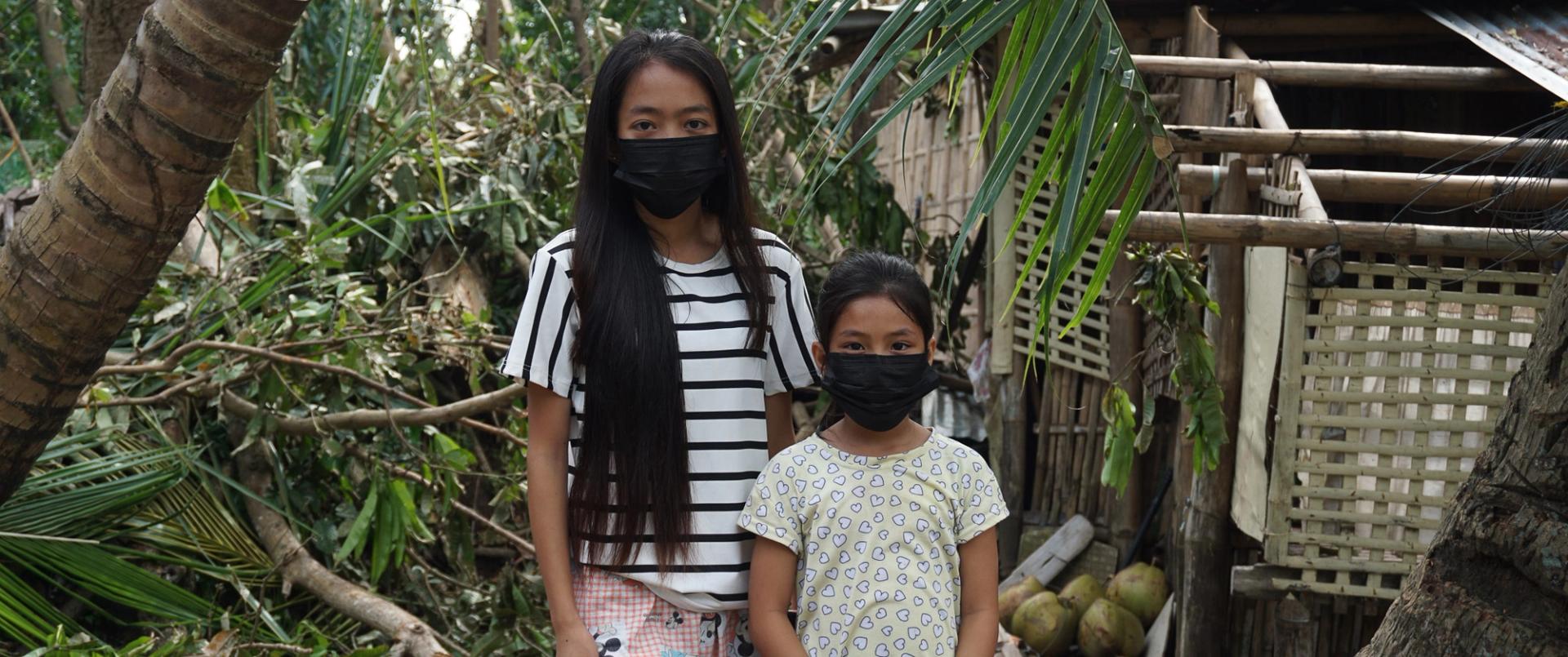50,000 families still living in evacuation centres after Typhoon Rai
16 January 2022
•By marie


On December 16 th 2021 Typhoon Rai made landfall at the city of Surigao, in the north eastern tip of Mindanao in the Philippines. The typhoon brought 195km per hour winds, torrential rainfall and caused widespread flooding and devastation.
Sadly, 402 people lost their lives, 1,147 people were injured and 78 people are still missing. Once again, children and families are finding themselves facing crisis.
Many children across the island nation were looking forward to a normal Christmas, with COVID-19 cases subsiding and travel restrictions being lifted. But instead of spending the holidays with loved ones, many children and their families were forced to flee their homes due to flooding and are still living in evacuation centres.
Mary Ann and her family are just one family left homeless by Typhoon Rai. “My husband, three kids and I had already evacuated and went came here to the school even before Typhoon Rai came. After the storm passed, I went to check our house, but it was no longer there. Until now I don’t know where we will go,” said Mary Ann.
Significant portions of the region still do not have access to power or clean water. To date, there are still just over 50,000 families living in evacuation centres with little certainty about when they will be able to return home and begin to rebuild their lives.
ChildFund Philippines is helping to distribute emergency food rations, setting up emergency housing for families and access to clean water and power. They are also identifying how best to support children who experienced trauma because of Typhoon Rai – particularly for those still living in evacuation centres.
Working with local partners and authorities in ten communities struck, ChildFund is committed to ensuring that children have access to counselling services, education, and child-friendly spaces while they are living in evacuation centres. ChildFund Australia has contributed AUD$75,000, of a total amount of AUD$300,000, directly to the emergency response efforts.
These spaces give the children the opportunity to play and learn to help build their resilience and well-being in a safe environment. The child-friendly spaces run psychological first aid sessions to help children process their experiences and trauma through interactive activities like sharing, drawing, role playing to help them express themselves as they rebuild their lives after the disaster.
